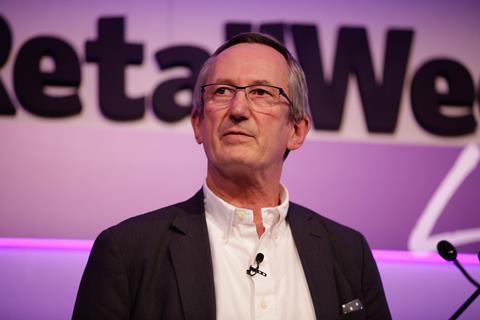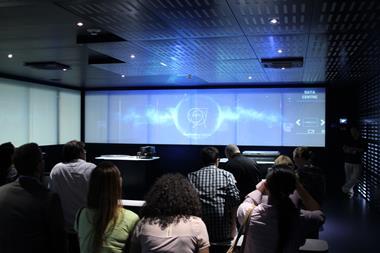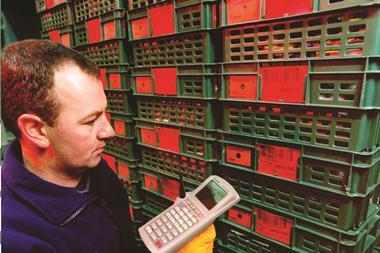How the UK’s leading retailers are harnessing systems, tools and technologies to effectively exploit big data to drive up profits.
Make no mistake about it – data is the retail industry’s most critical asset.
Hailed as “the new gold for retail” by German fashion retailer Otto, big data is the key to dramatic improvements in margins, sales and return rates.

The group has had “incredible results” from using predictive data analytics, including “dramatic improvements in margins, sales and return rates”, supply and category manager Michael Sinn told the audience at this year’s Retail Week Live conference.
Everything from competitors’ pricing and the weather to historic transactions and market trends are churned over by computers using algorithms rather than humans armed with Excel spreadsheets.
“We have over two million different items, so no-one can do that kind of forecasting by hand,” Sinn says. “And because ecommerce is so transparent we also have to have competitive prices every day. Using [Blue Yonder’s] dynamic pricing technology we’ve been better able to meet the prices customers want and accept.”
Shop Direct’s investment in big data and technology is also starting to pay off – group chief executive Alex Baldock said as much when reflecting on a 78% surge in full-year pre-tax profits. “We’ve made some huge strides in recent years when it comes to personalisation,” explains group ecommerce director Jonathan Wall.

“Our new decision engine [developed with SAS] is helping us achieve real-time personalisation of the products we serve up to customers based on their browsing habits, what they’ve purchased previously and a whole range of other factors. So if our customer is looking for a pair of jeans, we can instantly serve up the best selection of jeans, picked just for them,” he adds.
Get this right and it can certainly pay off. Amazon’s ‘similar product’ recommendations are said to boost sales between 10% to 30%. Get it wrong and the consequences can be severe.
Research just published by Ometria shows that almost half of Brits (46%) would ditch their favourite brands if they felt they didn’t understand them as a customer or failed to make smart product recommendations based on their personal preferences.
Each year, customer experience-related expectations have been going up, and this ever-building pressure is forcing retailers to identify strategies to improve the way they can make each customer feel special, says the technology provider’s chief executive Ivan Mazour. “The only solution is data.”
Encouraging data-driven decisions
Some companies have already been crunched by the data revolution – BHS being the most notable recent example. “We have masses of data, we have some knowledge, but we have even less intelligence,” admitted the company’s chief information officer last month. “There is a proliferation of data, making money is about data.”
The challenge for the traditional bricks and mortar retailers is that their customers – accustomed to product recommendations, rewards and offers being tailored to their tastes and preferences when shopping online – want that same experience in a physical store. “This is harder to achieve, but it has the potential for the greatest rewards,” says Visa Europe managing director for UK & Ireland Kevin Jenkins.
“Just putting all your data in one place and telling the business it’s there to use won’t result in pounds falling out of the back end. You have to make it relevant to the decision-makers”
Pete Williams, M&S
Argos is currently investing in a new platform to explore how to use data in different ways – from understanding the activity around key trading times such as Black Friday and when people do what, to tailoring promotions and enticing more and more customers to use its fast track delivery.
“We want more people to use it because it’s a key differentiator for us,” says Argos head of analytics Nick Davies. Big data can help Argos “overachieve” in consumers’ eyes, he says. “So, if we know that there’s a fair bet that a customer will want product Y to go with product X, then we can offer them the benefit of both products in a bundle or promotion mechanic.”
The retailer also has high hopes for e-receipts (in a project it is working on with Yocuda), which Davies sees as a “good value exchange” – Argos will have better visibility of in-store shopping habits and preferences to develop a more comprehensive view of the customer, who in turn will have a more seamless experience from purchase to returns.
In contrast to Argos, OC&C Strategy Consultants is discovering many fashion retailers are still unconvinced of the impact of large-scale data capture. “However, we are seeing some developments,” says partner, Tim Cook. “Clever” tracking of what adjectives work best to advertise certain products online, for example. One recent study showed that words such as pretty, sexy and detailed were consistently descriptions for the most popular items. “There are pockets of activity but it’s still embryonic,” Cook says.
“Retailers are now looking towards more systematic capability build to help them make more data driven decisions”
Marks and Spencer’s new big data platform is already helping make “better and faster decisions”. The website, 1,200 stores and banking and insurance arms gives M&S head of enterprise analytics Pete Williams and his team a much richer understanding of customers – “beyond the pureplays” – but that brings challenges in terms of how to collect and present the data.
M&S isn’t alone in grappling with the levels of data at their disposal. The trick is to prioritise the stuff that will deliver the most value to their business and then direct their people power to the most important and useful data to make sure it’s interrogated and used as effectively as possible.
As Williams explains: “Just putting all your data in one place and telling the business it’s there to use won’t result in pounds falling out of the back end. You have to make it relevant to the decision-makers,” and throughout the business.
This could be the start of a “new wave of activity”. Personalisation and contexualisation will undoubtedly remain key trends, but after an initial burst “optimising the hell out of things” – as OC&C’s Cook puts it – retailers are now looking towards more systematic capability build to help them make more data driven decisions. “[This may] not be as sexy but it may be more fundamental to how retail businesses change,” he concludes.
How well are using big data?
Experts suggest that effective use of big data has been steady rather than startling, so far. Accenture research, published last month, found the number of UK shoppers who believe that having the ability to check product availability online prior to going to the store would improve their experience increased from 33% to 44% in the past year. But only 40% of retailers currently offer this capability. What’s more, 38% of UK shoppers want to receive real-time promotions but none of the retailers surveyed could provide it.
Some of this may be down to competition: “The closer you get to the real make-a-difference stuff and the further you get from vendor spin, the more nervous my customers get,” says one technology specialist. But there’s an element of care here too, as retailers tread the fine line between creepy and cool. “This is a contract that retailers and consumers are both finding our way in,” explains Williams.
Machines learn fast and the more data they crunch the more accurate their predictions become. It’s hardly surprising that this level of insight has attracted attention. “As we turn our backs on bricks-and-mortar shopping, the landscape that greets us is a cul-de-sac in which our desires are second-guessed and swiftly sated,” is how The Guardian’s Catherine Shoard recently described this era of ever more sophisticated algorithms. Data experts such as Blue Yonder founder Professor Dr Michael Feindt feel it’s the only way to go. “By using advanced machine learning algorithms […] retailers have achieved up to 90% reduction in out of stock rates and a 15% increase in revenue through replenishment and price optimisation solutions,” he says.
But handing power over to the machines is something that data specialists are often more comfortable with than retail staff at large. “If I say to someone that I’ll empower you to make a data-based decision they are like a rabbit caught in headlights,” Williams admits. There’s an “internal marketing” job to be done, he adds. “If I present the data in the right way, then they can make a common sense decision that is driven by data.”


























No comments yet